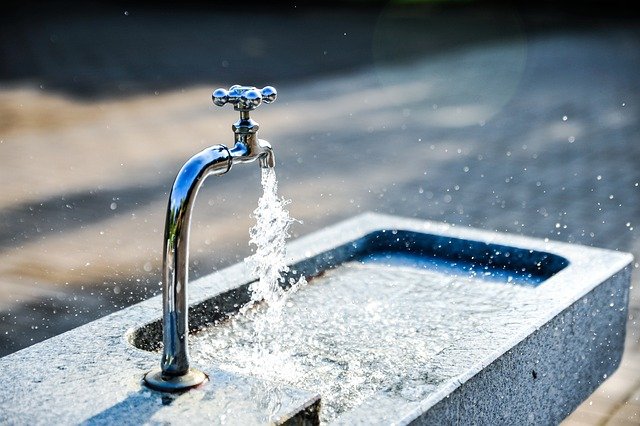

Pornt: "Salida de agua"
Normalmente, cuando piensa en el agua, uno piensa en ir a la nevera o en abrir el grifo o la llave del agua. Pero eso pasa cuando está en la ciudad, o en un área civilizada. Ahora bien, cuando está en zonas rurales, en la selva, la montaña o un bosque, uno debe buscar dónde existe una fuente o una salida de agua para poder obtener el vital líquido, que usamos constantemente en nuestra vida.
Para mí, fue bien interesante, al venir de una ciudad, el llegar a convivir en una zona indígena. Recuerdo mucho, que cuando estaba en la misión, uno tenía el agua a través de un servicio, que era igual al de una ciudad o pueblo. Es decir, uno abría la llave y salía el agua. Pero lo que no conocía, era de dónde venía el agua que usábamos.
Al lado de la misión, estaba el pueblo, y por supuesto, el pueblo también tenía un servicio de agua. Pero cuando vino el verano, me di cuenta de que el pueblo se quedó sin agua, mientras que la misión continuaba teniendo el vital líquido. Y hay fue cuando me enteré, que había dos servicios de agua.
Había uno que utilizaba el pueblo, que era un servicio prestado por el Estado y conseguido por los líderes de las comunidades indígenas, y otro que usaba la misión, hecho por los misioneros en los años 20. Lo cierto, es que cuando dejó de entrar el agua por las tuberías del Estado, las comunidades, nos pidieron que abriéramos el acueducto antiguo para el pueblo, mientras se restablecía nuevamente el servicio.
Cómo yo no conocía el acueducto, subí la montaña con uno de los frailes, y me quedé maravillado con la ingeniería realizada para realizar el acueducto, que era muy simple. Lo primero que hicieron los frailes, fue conseguir un manantial con una buena salida de agua, luego, hicieron unas tuberías, que iban a un tanque que habían hecho en la parte de abajo, y del tanque, había un tubo de 6 pulgadas que se dividía en una tubería con forma de "V" que iban a unas llaves de paso, que daban la entrada a dos tuberías, una que iba al pueblo y una que iba a la misión.
Y el recorrido del agua se hacía por gravedad, y su fuerza aumentaba, con el cambio del grosor de la tubería. Si es cierto, que en el pueblo, el agua que venía del servicio que daba el Estado, llegaba con más fuerza debido a las bombas. También es cierto, que el acueducto, hecho por los frailes, funcionaba bastante bien, aunque con un poco menor de fuerza y siempre ha dado la talla desde su construcción hasta la actualidad.
Gracias por leerme
Si quieres participar en este concurso puedes hacerlo aquí
Invito a participar a: @esbat, @alicia2022, @nahueldare3627.


To Read in English


5-minute daily prompt: The aqueduct of the mission. Original Content.
Normally, when you think about water, you think about going to the refrigerator or turning on the faucet or the water tap. But that happens when you are in the city, or in a civilized area. Now, when you are in rural areas, in the jungle, the mountain or a forest, one must look for where there is a source or an outlet of water in order to obtain the vital liquid, which we constantly use in our life.
For me, it was very interesting, coming from a city, to get to live in an indigenous area. I remember a lot, that when I was in the mission, one had the water through a service, which was the same as that of a city or town. That is, one would turn on the faucet and the water would come out. But what I didn't know, was where the water we used came from.
Next to the mission, there was the village, and of course, the village also had a water service. But when summer came, I realized that the village ran out of water, while the mission continued to have the vital liquid. And there was when I found out, that there were two water services.
There was one that was used by the people, which was a service provided by the state and obtained by the leaders of the indigenous communities, and another that used the mission, made by the missionaries in the 20s. The truth is that when the water stopped coming in through the state pipes, the communities asked us to open the old aqueduct for the people, while the service was restored again.
As I did not know the aqueduct, I climbed the mountain with one of the friars, and I was amazed by the engineering carried out to make the aqueduct, which was very simple. The first thing the friars did was to get a spring with a good water outlet, then they made some pipes, which went to a tank they had made at the bottom, and from the tank, there was a 6-inch pipe that divided into a "V"-shaped pipe that went to some stopcocks, which gave the entrance to two pipes, one that went to the village and one that went to the mission.
And the path of the water was made by gravity, and its force increased, with the change of the thickness of the pipe. If it is true, that in the village, the water that came from the service provided by the state, arrived with more force due to the pumps. It is also true that the aqueduct, made by the friars, worked quite well, although with a little less force and has always stood the test from its construction to the present.
Thanks for reading me
If you want to participate in this contest you can do it aquí
I invite to participate to: @esbat, @alicia2022, @nahueldare3627.



